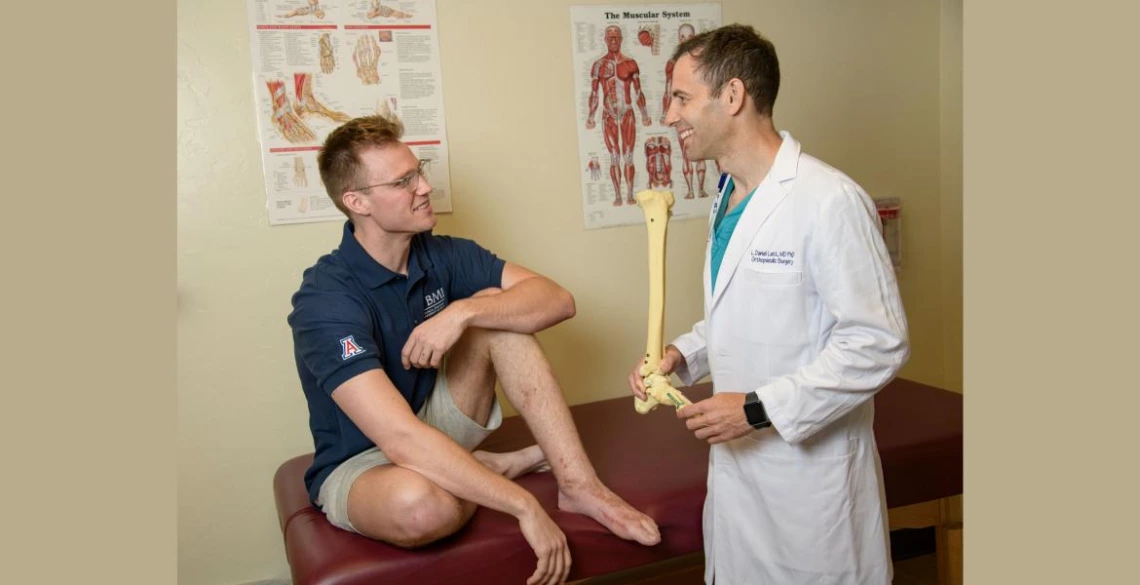Latt Reconstructs BME Student's Foot After Car Crash

In October 2018, during his senior year as a BME student, Ian Jackson was struck by a car while riding his motorcycle home from the University of Arizona campus. The car ran a stop sign and plowed into him, resulting in a broken femur, tibia and fibula; unstable fractures of several vertebrae; and a mangled left foot.
Three days after the accident, Dr. Daniel Latt, a UArizona associate professor of orthopaedic surgery and biomedical engineering at UArizona, as well as a foot and ankle orthopedic surgeon at Banner – University Medicine, grew concerned about his student's absence. Jackson planned to attend medical school after graduation, and he’d been shadowing Latt in his clinic for about two years. Latt soon learned Jackson was in the hospital, and reviewed his X-rays – especially of his foot which several colleagues had mentioned may need to be amputated.
One of Latt’s specialties is operating on patients with Charcot arthropathy, a complication of diabetes that can weaken the bones in the foot. Jackson had spent the last year observing Latt’s work with Charcot patients. Faced with the possibility of amputation, the patients traveled from all over the country to see Latt.
“It made me realize he was doing something different,” said Jackson, now a BME alumnus. “I just didn’t realize how important it would be for my life. I told him, ‘I really believe you can fix it.’ Because he fixed impossible situations.”
Dr. Lloyd Champagne, a plastic surgeon from the Arizona Center for Hand to Shoulder Surgery in Phoenix, used skin grafts to repair the outside of Jackson’s foot first. Then, Latt used plates and screws to carefully reconstruct the inside, over the course of two eight-hour surgeries.
Thanks to the efforts of these and other doctors from Banner Health, Jackson is fully on his feet today. He’s walking normally and even relearning how to run and squat.
He’s found himself in the unique position of having been on both sides of the hospital bed, as a clinical trainee and a patient.
His experience gave him lots of ideas about how to make hospitals more comfortable for patients, like a design for a more comfortable catheter, and an improved hospital bed that can identify pressure points on patients to prevent ulcers. He plans to build a specialized design laboratory where he can bring his inventions to life.
"If I could just produce devices that make a person’s experience one degree better, that’s worth it," he said. "If I wasn’t a biomedical engineering major, I don’t think I would have even considered that I might be able to change the industry to be patient-focused."
